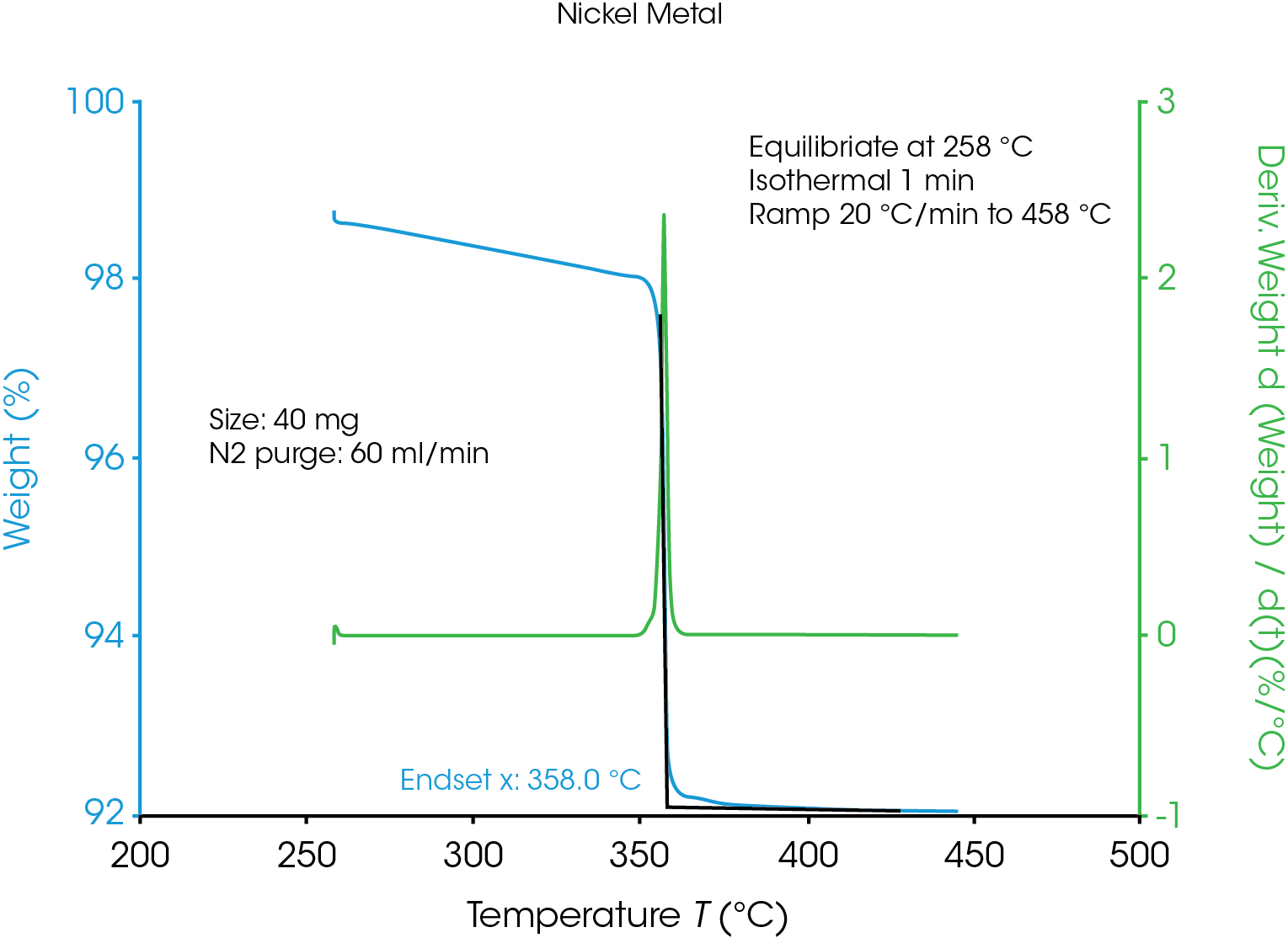Keywords: Curie temperature, magnetic transition, ferromagnetic, metal.
TA426
Ferromagnetism is a property of certain materials which depend on their chemical nature, crystalline structure and microstructure. Ferromagnetic materials can form permanent magnets. These materials show permanent magnetic properties regardless the presence of an external magnetic field. Some examples of ferromagnetic materials are iron, nickel, cobalt and most of their alloys.
TGA is a practical thermal analysis technique that can be used to determine the curie temperature of ferromagnetic materials. Curie temperature is the temperature at which a magnetic material undergoes a sharp change in its magnetic properties. As the material is heated in the presence of a strong magnetic field, it goes from being attracted by the applied external magnetic field to unaffected by the applied external magnetic field. The TGA thermogram will exhibit an apparent weight loss (or gain – depending on the TGA furnace design) when the attraction to the magnet is lost. This extrapolated offset point is defined as the curie temperature, it is calculated by using the endset analysis function in the TGA TRIOS software.
For additional details, see Thermal Applications Note 427 and ASTM E 1582-93.

Acknowledgement
Click here to download the printable version of this application note.

